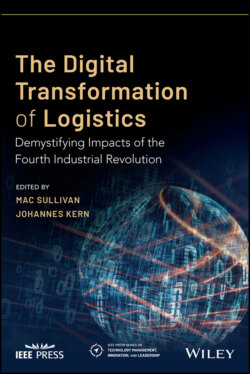Читать книгу The Digital Transformation of Logistics - Группа авторов - Страница 18
Introduction Future of Work in the Fourth Industrial Revolution
ОглавлениеThroughout history, during periods of agricultural and industrial reform, society was worried that most of its population will be out of a job as a new technology is developed (Manyika et al. 2017). These fears are reinforced by documented events in modern history where technology has led to mass layoffs. A transition from a post‐industrial era into a knowledge era has brought forth the same old argument that automation and artificial intelligence (AI) are going to cause widespread disruption. Until this point, white‐collar job has been dominated by the technologies created in the past four decades with the rise of the personal computer, Internet, and widespread business software applications. There has not been a large shift in the business‐to‐business (B2B) world in terms of reallocation of white‐collar labor resources and skillsets, which is surprising given the pervasiveness of mobile, e‐commerce, and sharing economy trends that are driving consumer behavior.
Some signals show that the world is at the brink of a new technological revolution, now referred to as the Fourth Industrial Revolution (4IR), where the convergence of new and old technologies promises to redefine and transform the future of work and more. The intricacy and extent to which this transformation will happen will be unlike anything that has previously occurred (Schwab 2015). Implementing and realizing the results of the technologies laid out in the 4IR remain theoretical outside a few select companies. However, breakthroughs in AI and machine learning are poised to have a direct impact on our daily lives (Lee 2018). In some ways, the 4IR is a continuation of digitalization brought about by the Third Industrial Revolution as seen in Figure 1.1. However, it is unique in how it is blending the physical and cyber worlds through the prevalence of several technologies: Internet of Things (IoT) devices, cheaper cloud computing, AI, and automation (Marr 2018).
The computerization of rote tasks once done by clerks, the displacement of traditional business models through platform software application and websites, and the automation of manufacturing and physical movement of goods were all witnessed in most parts of the developed world in the early twenty‐first century. Looking toward the future, by 2022, companies have the potential to boost revenues by nearly 40 % by investing in AI and human partnership that would translate to $800 billion in new profitability (Simkin 2016). What the steam engine was able to do in decades for muscle power, computers, and digital automation was done for brain power by fundamentally reshaping the way that we think and the environment we operate in (Brynjolfsson and McAfee 2014). Much like its predecessors, the 4IR is changing the way that humans interact with the world and opening new opportunities for businesses to optimize their workflows.
Figure 1.1 The Fourth Industrial Revolution.
In his book, Hit Refresh, Microsoft's CEO Satya Nadella states that the origin of the 4IR can be identified by “A confluence of three breakthroughs—Big Data, massive computing power, and sophisticated algorithms,” and that it is “accelerating AI from sci‐fi to reality” (Nadella et al. 2017). Previously, Thomas Friedman had pointed out that the world is much flatter than it used to be as a result of the outsourcing of not only physical labor but also, with the adoption of new technology, white‐collar labor (Friedman 2007). With such a quickly evolving landscape, it is important to note that the way companies adopt these technologies will have significant impacts on their communities, company structure and strategy, and ultimately their future. While robotic process automation (RPA) and AI are not necessarily novel concepts, downstream consumer demand, consultant‐driven media blitz, and subsequent executive exploration give insight into where the B2B service sector is headed.
